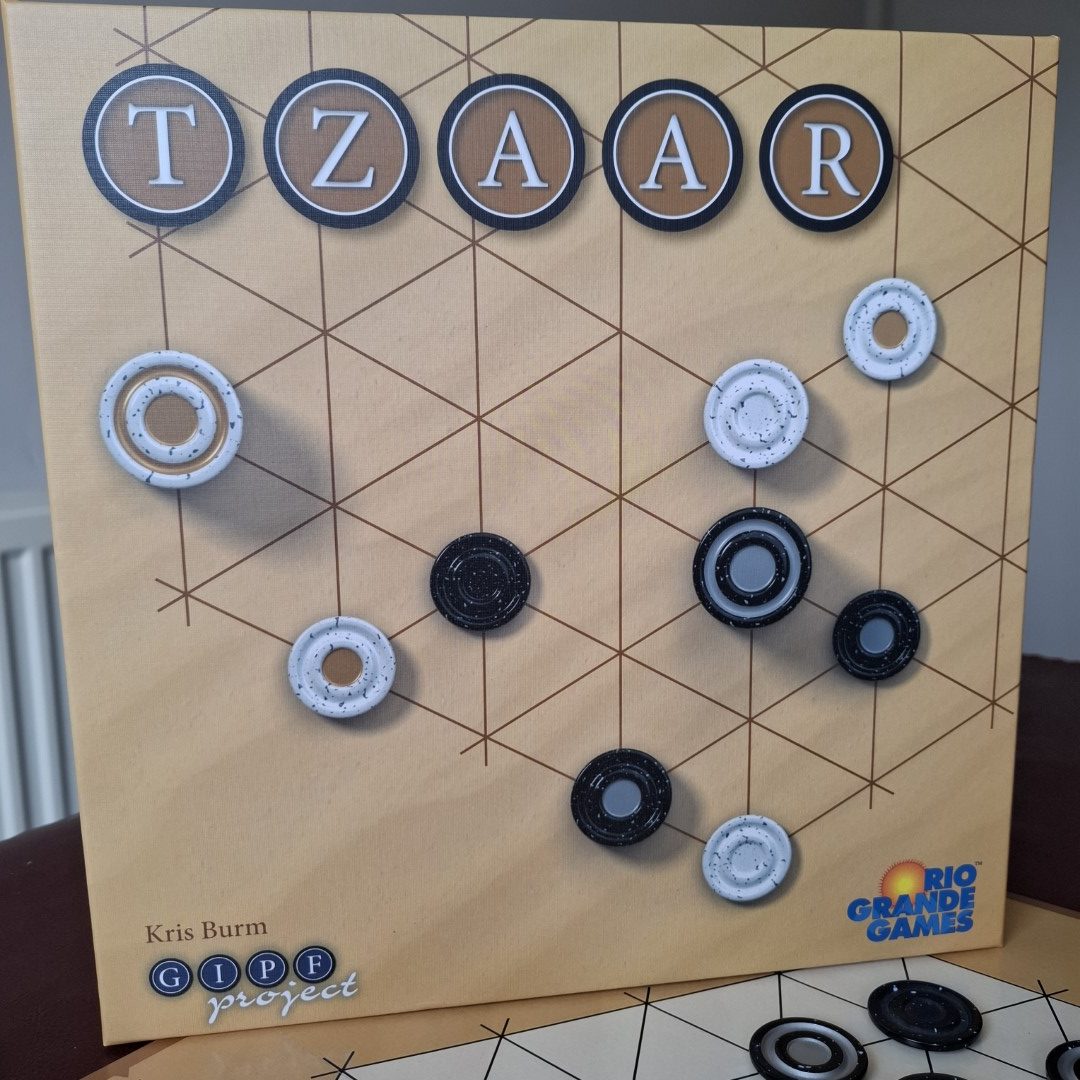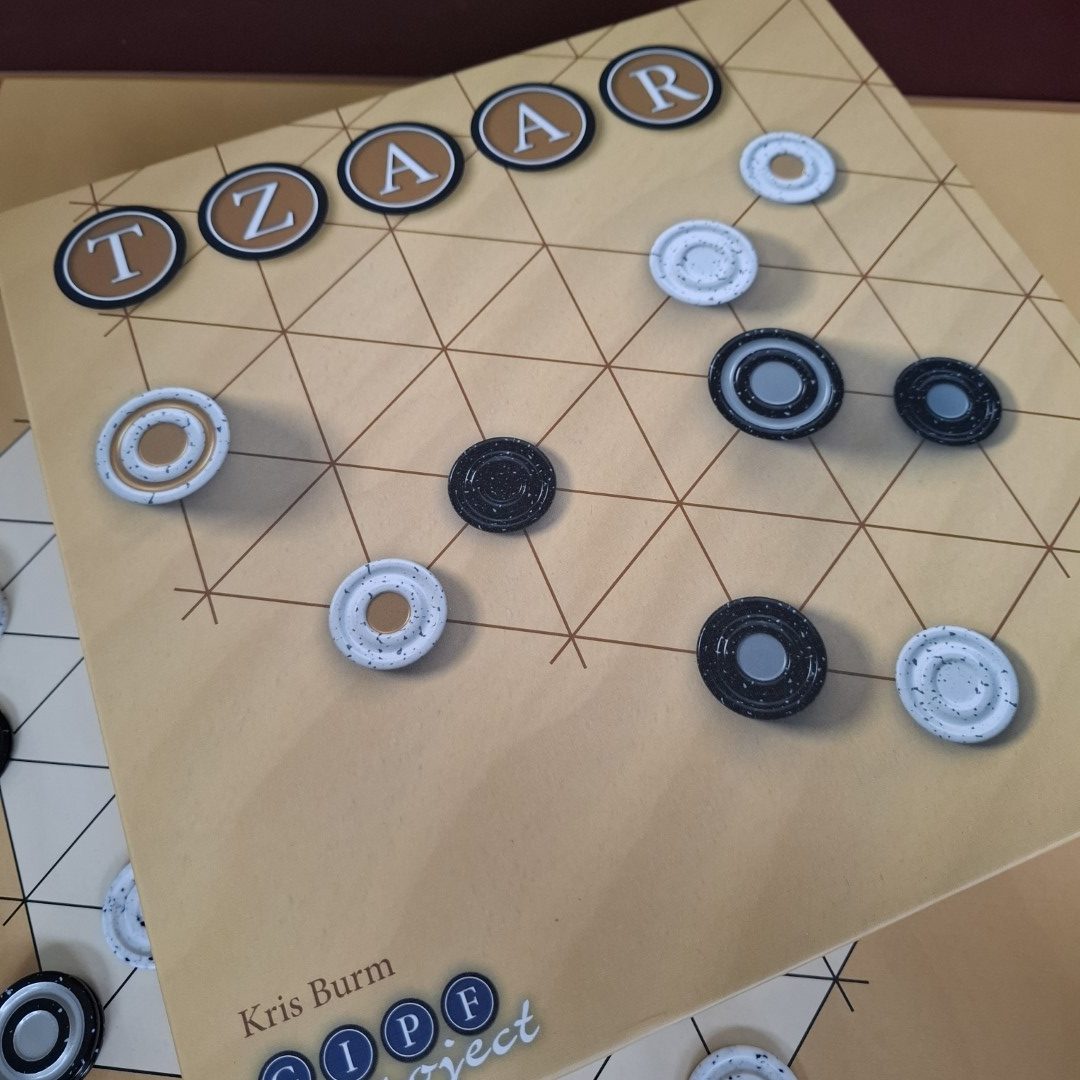TZAAR is the second abstract game in the GIPF series by Kris Burm. Now, you might be wondering—why start with the second game? Well, Reddit told me to. That’s it. Apparently, it’s considered the best in the GIPF series. But “best” is subjective, right? What others love might not be my thing—which, honestly, is the core theme of this review.
Also, is it even the second game? The order seems to have changed a few times. But it’s got a number 2 on the box.
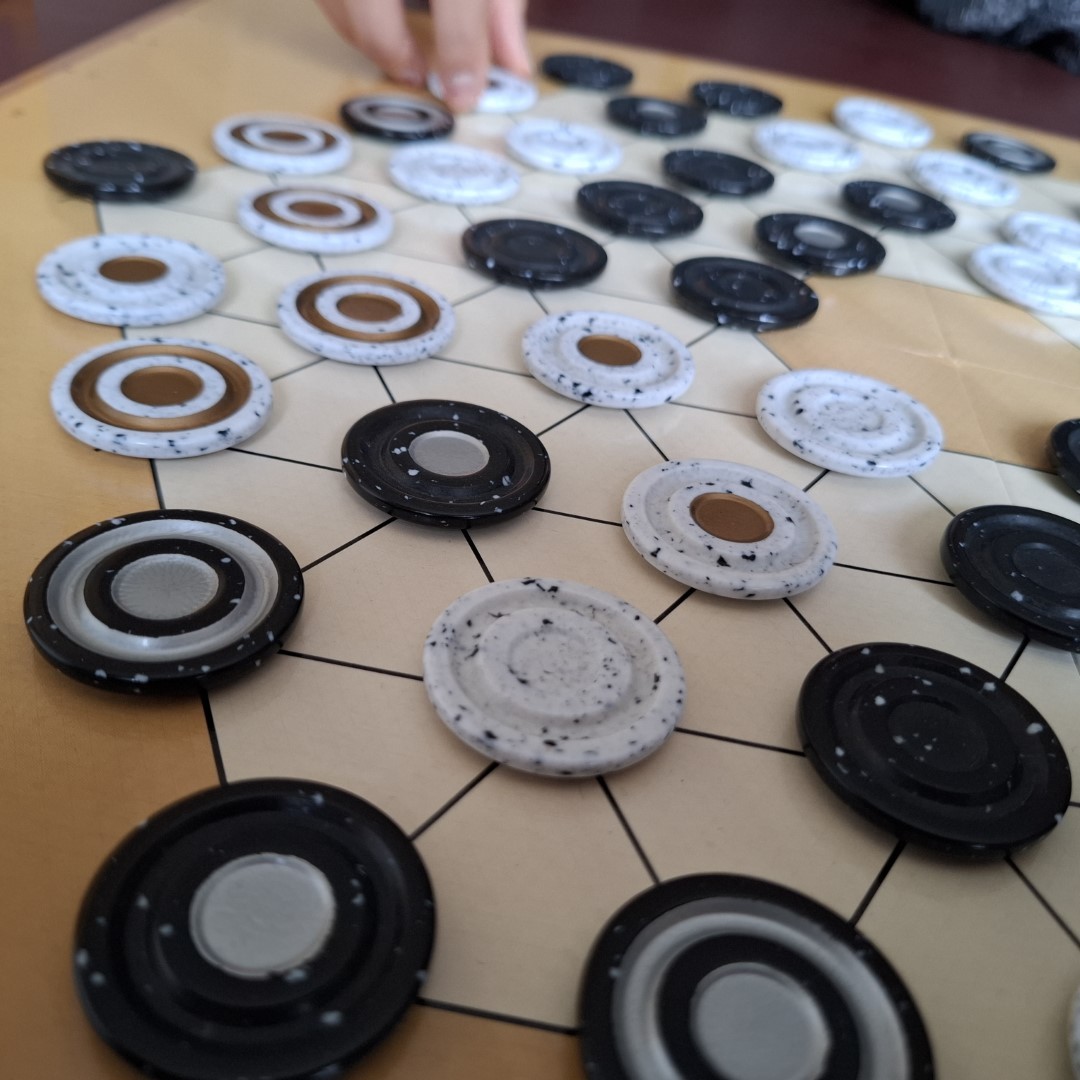
How to play
TZAAR boils down to one question:
“Do I make myself stronger, or do I weaken my opponent?”
That’s the essence of the game. Not the most technical explanation, but it captures the spirit of TZAAR in a single thought.
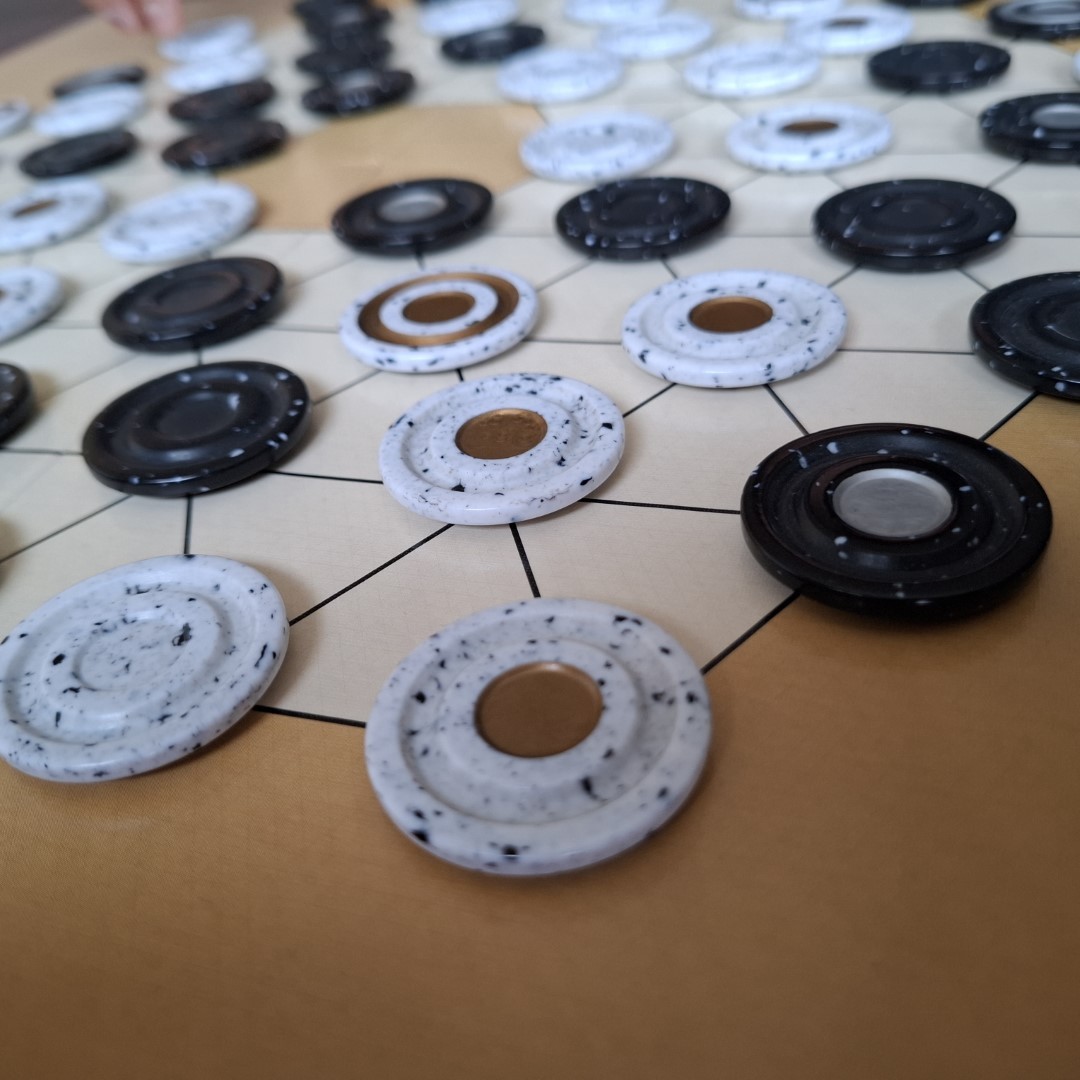
Winning the Game
You win by either:
- Making your opponent run out of one of the three types of pieces, or
- Putting them in a position where they can’t capture on their turn.
The Pieces
Each player controls three types of pieces:
- Tzaars (6)
- Tzarras (9)
- Totts (15)
At the start of the game, all pieces are randomly placed on the board, and White moves first.
Your Turn
On your turn, you must capture a piece. After that, you can either:
- Capture again,
- Strengthen one of your own pieces, or
- Pass.
Capturing Pieces
You can capture an opponent’s piece in two ways:
- Moving into an adjacent space.
- Moving in a straight line over empty spaces. All pieces are equal in ability when capturing. The only difference is height.
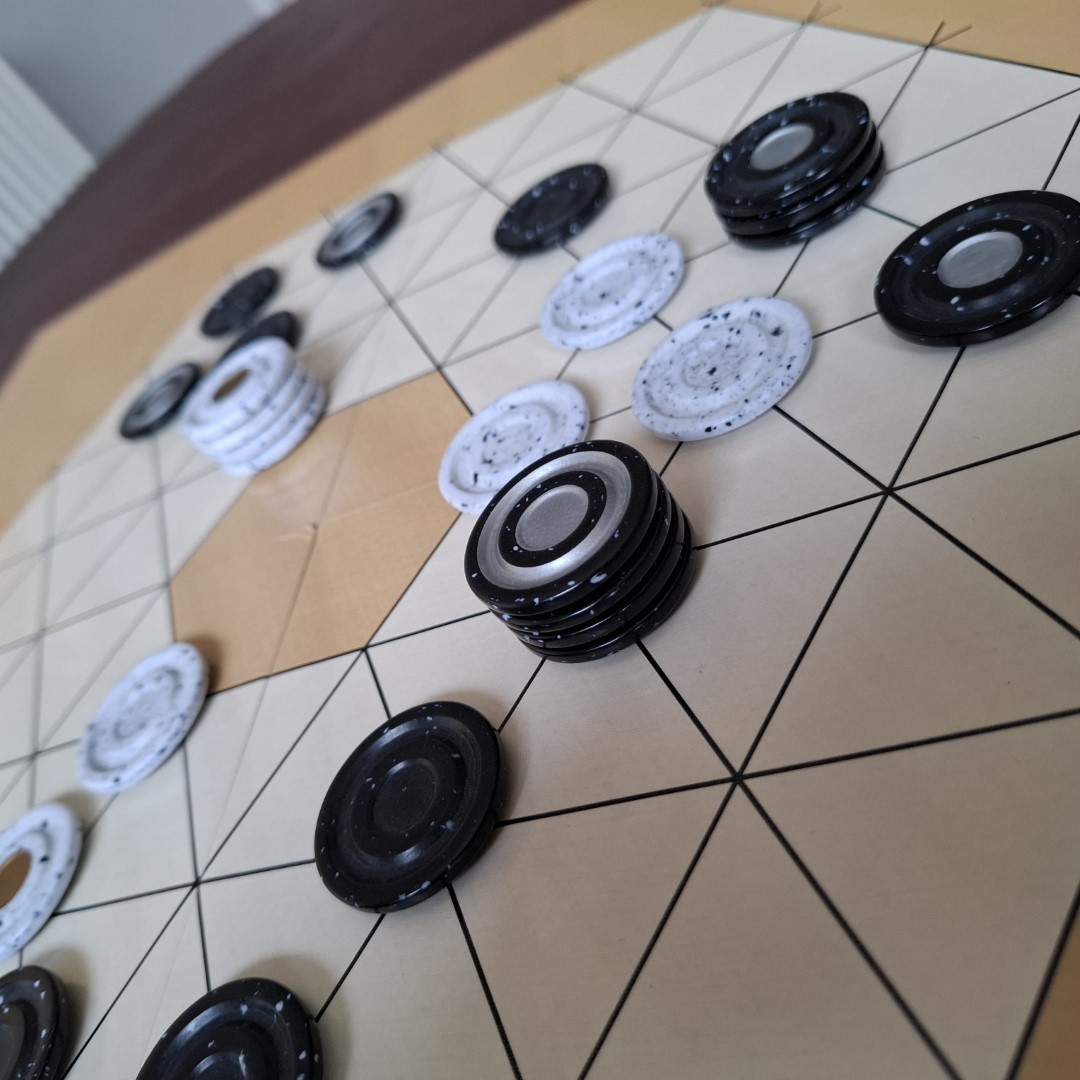
Strengthening Pieces
At the start, every piece has a height of one. You can strengthen a piece by stacking it on top of another friendly piece. This increases its strength, which matters because:
- A strength-2 piece can only be captured by another strength-2 (or higher) piece.
- A strength-2 piece can still capture weaker, strength-1 pieces.
Stacking follows the same movement rules as capturing—adjacent or straight-line jumps.
A Few Key Rules
You must capture on your first move.
Stacks can’t contain mixed piece types.
The center of the board is off-limits.
Only the top piece in a stack counts when checking if you still have one of each piece type left. So don’t stack all your TZAARs—you’ll lose track of them fast!
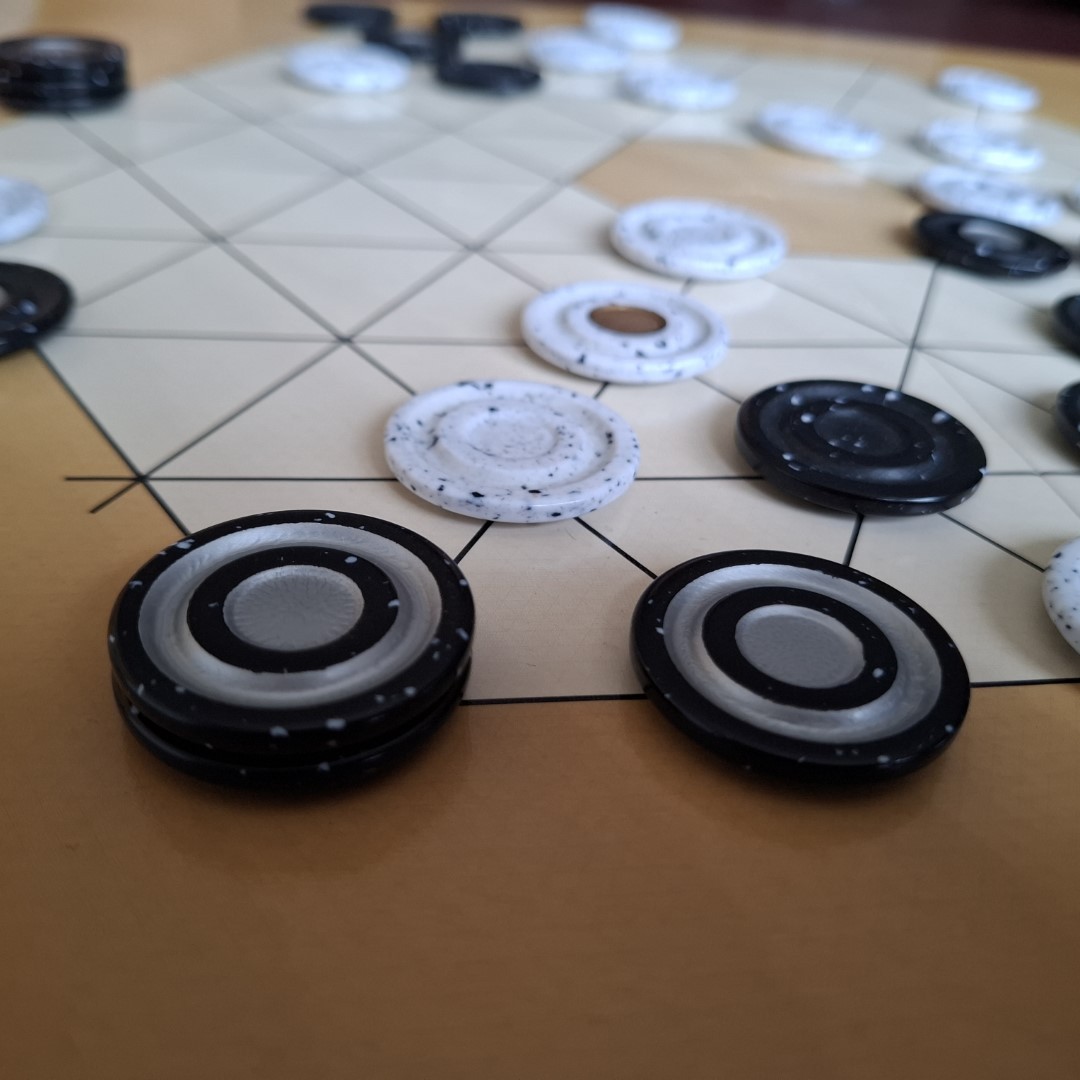
First Impressions
I think the title gives it away—TZAAR is aggression, embodied. Every turn, you chip away at your opponent, and they do the same to you. There’s no way around it.
My first thought when opening the box?
- The rulebook has a weird color scheme, but the actual rules are fine. It’s weird in that it’s black and white printed onto a colour background.
- The pieces are nice and relatively weighty—not quite Splendor level, but still satisfying.
- The board, is a bit disappointing. Ours had a bad fold that wouldn’t stay flat, even after six plays and multiple attempts to fix it. Maybe just bad luck?
More Plays, More Thoughts
After eight plays, I feel like I’ve barely scratched the surface of TZAAR’s strategy. But one thing became clear: it’s not just about aggression. If you go all-out attack while your opponent strengthens their pieces, you’re in trouble fast. But making one massive stack isn’t the answer either—you’ll get stuck with no moves.
So… maybe TZAAR isn’t as aggressively one-sided as I first thought. But for my household, it’s still too direct. Santorini works better for us—maybe because it’s not as brutally confrontational. That doesn’t make TZAAR a bad game, just not the right fit for us.
Unfortunately, TZAAR isn’t on Board Game Arena. It’s on Boardspace.net, which feels clunky on my phone. But there is an app!
Oh, and about the playtime listed on the box—where did 30-60 minutes come from? None of our games have lasted over 30 minutes. Even if you analyze every move, 60 minutes seems excessive. Most boxes underestimate playtime—did TZAAR overestimate it?
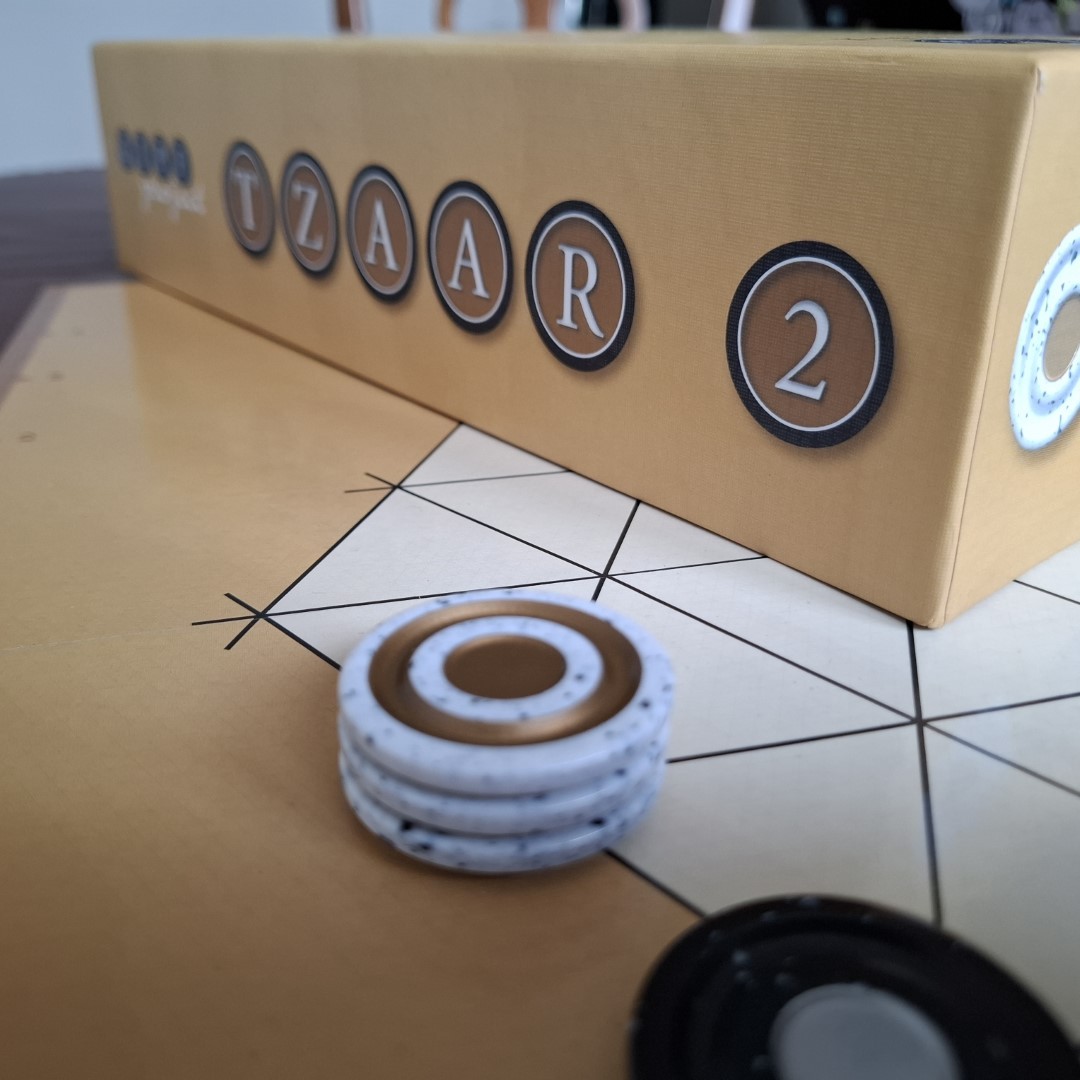
Your Title Goes Here
TZAAR feels perfectly balanced—at least, I think it is. But it’s not for everyone. That direct confrontation is unavoidable, and some players I introduced it to found it too attack-focused. That said, after more plays, I realized developing pieces is just as important as attacking.
If you love abstract strategy games, you owe it to yourself to try TZAAR. But do you need TZAAR if you already own other GIPF games? I’ve played GIPF recently, and TZAAR is the one I keep coming back to. I still haven’t played YINSH, so the ranking remains undecided.
Final Recommendation? TZAAR is a Buy or Play.
Where does it rank in the GIPF series for me? Not sure yet. But if you dislike abstract games or struggle with direct, constant aggression, you might want to skip this one and try Santorini instead.
Want to purchase TZAAR, you can here: https://kienda.co.uk/abstract-games/2917-tzaar-4260071879530.html (I don’t earn commission from this link)
